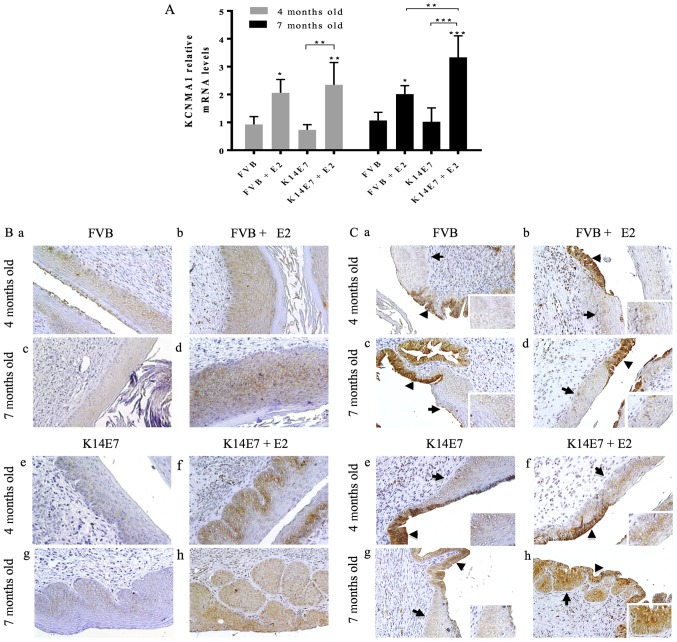Figure 2.
Increased KCNMA1 expression in cervical dysplasia and cancer in the K14E7 transgenic mice. (A) Gene expression of Kcnma1 mRNA was enhanced by 17β-estradiol in all the groups, but the highest levels were found in the cervical cancer group, that is, in the transgenic mice treated with E2 for 6 months (7 months old). Four independent experiments (mean ± SD), *P<0.05, **P<0.005, and ***P<0.001 vs. the corresponding FVB group, unless indicated. (B) KCNMA1 Protein expression (brown immunostaining) was increased throughout the multiple layers of cells in low-grade cervical dysplasia (f), and cervical cancer (h) in the transgenic mice, while weaker protein expression was detected in either the normal cervical squamous epithelium (a and c) or hyperplastic lesions (b and d) of non-transgenic FVB mice, and in the cervical squamous epithelium of transgenic mice non-treated with E2 (e and g). (C) Representative images of the cervical transformation zone showing KCNMA1 protein expression in the endocervical epithelium (black triangles) of all groups. Interestingly, the squamous cells (arrows, and inserts at the right bottom side of each panel) displayed positive immunostaining only in the transgenic mice with either cervical dysplasia (f) or cervical cancer (h). n=3 mice per group. Magnification, ×20.

